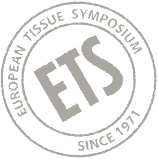Handkerchiefs are very personal products and are often seen as an accessory, but they also have a very important hygienic use. In fact, they help to deal with withdrawal symptoms and sneezing. The industry offers a very wide range of handkerchiefs and facial tissues that appeal for both functional and emotional reasons.
Also, have you ever stopped to think that handkerchiefs might be guilty of spreading infections rather than stopping them? Professor Marc Van Ranst, a leading virologist, makes a passionate case for ditching the traditional cloth handkerchief in favour of hygienic and sustainable paper tissues.
Read his tasty article on the subject here below:

De Morgen – newspaper – 10/01/2025
REQUIEM FOR THE HANDKERCHIEF
The 1960s were coming to an end. I enjoyed going to kindergarten on the Spoorweg lane in Boom, in the Netherlands. The fact that the endlessly large playground was actually a dreary plain of concrete tiles did not dawn on me then. There was one gigantic metal climbing frame that, I am sure, would never have met the EN-1176 standard for playground equipment safety. There was no fall-absorbing surface at all (EN-1177 standard). If you fell, you fell on concrete tiles, and that hurt. Sometimes it bled a little, but that stopped on its own. That’s how it was back then. Nobody complained.
There was great solidarity among the toddlers who survived that playground. We shared everything. If your parents had forgotten to give you a handkerchief in the morning, it was never a problem. One of your friends immediately lent you his, and after using it, you neatly returned it. We were always sick, too.That’s how it was back then.
Handkerchiefs have been used for centuries. In his book De civilitate morum puerilium that came out in 1530, Erasmus wrote: “Decorum excipere recrementa narium strophiolis”. This was translated into Dutch in 1678 in Erasmus’ short book on civility in children as, “It is befitting to catch the dirtiness of the nostrils in nose cloths”.
For working people, the handkerchief remained a practical utensil. It served not only to catch snot but also to wipe sweat off the face. In the Middle Ages and Renaissance, expensive handkerchiefs were made of luxury materials such as silk and lace, often decorated with embroidery. They acted as status symbols, as evidenced by portraits of noble ladies and gentlemen proudly displaying their richly decorated handkerchiefs.
In addition, the handkerchief developed romantic significance. The gift of a handkerchief by a woman to a man could be a discreet declaration of love. In the Victorian era, this was extended to the so-called non- verbal ‘handkerchief language’, with which women could subtly express emotions or flirt. Each movement with a handkerchief carried a specific message. For instance, stroking along the cheek meant ‘I love you.’ Wiping across the eyes stood for ‘I’m sorry.’ While stroking along the forehead warned, ‘We are being watched.’ Dropping the handkerchief, upon which it was customary for a gentleman to pick it up and return it, suggested an invitation to an acquaintance.
During the Spanish flu epidemic in 1918, large-scale campaigns were launched advising the use of cotton or linen handkerchiefs when coughing and sneezing, and to change them regularly. Handkerchiefs grew into popular gifts that, although they did not inspire much, always proved welcome. Many of us still have piles and piles of handkerchiefs in a drawer.
After the Spanish flu was over, people began to realise that carrying a dirty handkerchief in a trouser pocket was not very hygienic. Bacteria and viruses remain in the handkerchief, and the warm environment of a trouser or jacket pocket creates ideal conditions for germs to survive. Each time one grasps the grubby handkerchief, the hands are also re-contaminated, allowing germs to spread further. Using a handkerchief is not hygienic.
Companies such as Kleenex in the United States and Tempo in Germany started mass-producing disposable paper tissues in the 1930s. In the second half of the 20th century, they increasingly replaced cloth handkerchiefs.
Paper mills today use recycled wood fibres from sustainably managed forests. Innovations in the production process have led to less energy and water consumption, less use of harmful substances such as bleach, and lower CO2 emissions. Disposable tissues are now about as sustainable as cloth tissues. Beware though: only tissues that comply with the EN 13432 standard (and therefore do not contain perfumes, glues, additives or synthetic fibres) may be composted or thrown in the organic waste bin.
It is high time to officially say goodbye to the handkerchief. Hence this appeal: experience one last time that blissful nostalgic feeling of emptying your nose into a freshly ironed handkerchief and then take your pile of handkerchiefs to a textile container.
MARC VAN RANST
Marc Van Ranst is a virologist at KU Leuven. His column appears biweekly.
Original post in De Morgen











